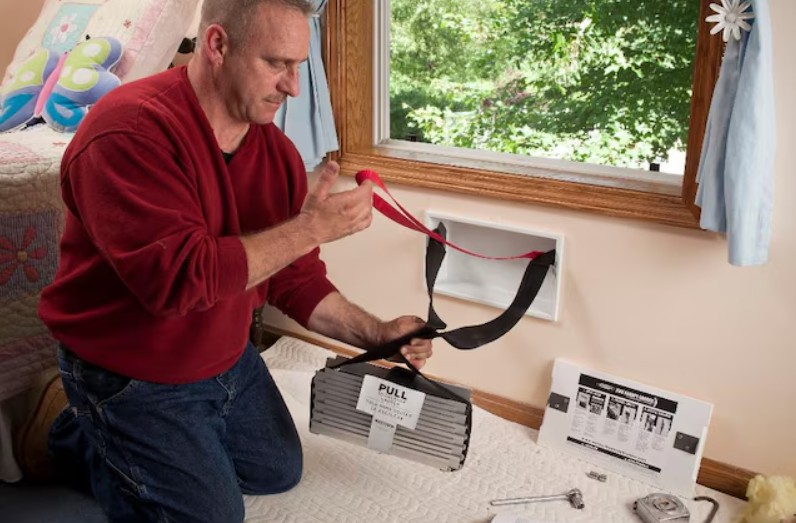
This is the story of the incredible cloning tax break.
In 2004, David Baszucki, fresh off a stint as a radio host in Santa Cruz, Calif., started a tiny video-game company. It was eligible for a tax break that lets investors in small businesses avoid millions of dollars in capital gains taxes if the start-ups hit it big.
Today Mr. Baszucki’s company, Roblox, the maker of one of the world’s most popular video-gaming platforms, is valued at about $60 billion. Mr. Baszucki is worth an estimated $7 billion.
Yet he and his extended family are reaping big benefits from a tax break aimed at small businesses.
Mr. Baszucki and his relatives have been able to multiply the tax break at least 12 times. Among those poised to avoid millions of dollars in capital gains taxes are Mr. Baszucki’s wife, his four children, his mother-in-law and even his first cousin-in-law, according to securities filings and people with knowledge of the matter.
The tax break is known as the Qualified Small Business Stock, or Q.S.B.S., exemption. It allows early investors in companies in many industries to avoid taxes on at least $10 million in profits.
The goal, when it was established in the early 1990s, was to coax people to put money into small companies. But over the next three decades, it would be contorted into the latest tax dodge in Silicon Valley, where new billionaires seem to sprout each week.
Thanks to the ingenuity of the tax-avoidance industry, investors in hot tech companies are exponentially enlarging the tax break. The trick is to give shares in those companies to friends or relatives. Even though these recipients didn’t put their money into the companies, they nonetheless inherit the tax break, and a further $10 million or more in profits becomes tax-free.
The savings for the richest American families — who would otherwise face a 23.8 percent capital gains tax — can quickly swell into the tens of millions.
The maneuver, which is legal, is known as “stacking,” because the tax breaks are piled on top of one another.
“If you walk down University Avenue in Palo Alto, every person involved in tech stacks,” said Christopher Karachale, a tax lawyer at the law firm Hanson Bridgett in San Francisco. He said he had helped dozens of families multiply the tax benefit.
Early investors in some of Silicon Valley’s marquee start-ups — including Uber, Lyft, Airbnb, Zoom, Pinterest and DoorDash — have all replicated this tax exemption by giving shares to friends and family, according to people who worked or were briefed on the tax strategies.
So have partners at top venture capital firms like Andreessen Horowitz, who have figured out ways to claim tens of millions of dollars in tax exemptions for themselves and relatives year after year, according to industry officials and lawyers.
Representatives of those companies declined to comment or didn’t respond to requests for comment. A Lyft spokesman said the company’s two co-founders didn’t take the tax benefit. A Roblox spokeswoman declined to comment.
The story of the tax break is in many ways the story of U.S. tax policy writ large. Congress enacts a loophole-laden law whose benefits skew toward the ultrarich. Lobbyists defeat efforts to rein it in. Then creative tax specialists at law, accounting and Wall Street firms transform it into something far more generous than what lawmakers had contemplated.
“Q.S.B.S. is an example of a provision that is on its face already outrageous,” said Daniel Hemel, a tax law professor at the University of Chicago. “But when you get smart tax lawyers in the room, the provision becomes, in practice, preposterous.”
Manoj Viswanathan, who is a director of the Center on Tax Law at the University of California, Hastings, estimates the tax break will cost the government at least $60 billion over the coming decade. But that doesn’t include taxes avoided by stacking, and so the true cost of the tax break is probably many times higher.
The Biden administration has proposed shrinking the benefit by more than half. But the plan wouldn’t restrict wealthy investors from multiplying the tax break.
The likely result, said Paul Lee, the chief tax strategist at Northern Trust Wealth Management, would be even more tax avoidance. “You’ll end up having more people doing more planning to multiply the exclusion,” he said.
Stacking has become so common that it has spawned other nicknames. One is “peanut buttering” — a reference to the ease with which the tax benefit can be spread among the original investor’s relatives.
Disqualifying the Ducks
The idea for this tax break came from the venture capital and biotech industries in the early 1990s. Venture capital firms were raking in huge profits from early investments in high-flying start-ups like Gilead Sciences and MedImmune.
That stuck them with hefty capital-gains tax bills. The Q.S.B.S. exemption would shield at least a chunk of their future profits from taxation.
With the economy in a recession, Democrats branded the tax break as a boon to small businesses and an engine of job creation. In Congress, an original backer was Senator Dale Bumpers, and he had the support of the National Venture Capital Association. “This is a modest tax incentive that holds great promise for hundreds of thousands of small firms with good ideas but not enough capital,” he said in early 1993.
Mr. Bumpers was friends with his fellow Arkansas Democrat, President Bill Clinton, whose new administration embraced the cause within weeks of taking power.
The exemption became law in August 1993. It allowed investors in eligible companies to avoid half the taxes on up to $10 million in capital gains (it would later be changed to eliminate all taxes on the $10 million) or 10 times what the investors paid for their shares.
There were a few restrictions. To be eligible for the tax break, investors had to hold the shares for at least five years. Industries like architecture and accounting were excluded. And, at least in theory, the companies couldn’t be big: They had to have “gross assets” of $50 million or less at the time of the investments.
That number wasn’t picked at random. At the time, a new professional hockey team, the Mighty Ducks of Anaheim, had just been created with a price tag of $50 million. The team was owned by the Walt Disney Company. Lawmakers feared that if Disney stood to benefit from the tax break, it risked a public backlash, according to a congressional aide who worked on the legislation.
The Internal Revenue Service doesn’t publicly disclose data on how frequently the tax break is used. But tax lawyers said it was slow to gain popularity. It would be decades before Silicon Valley figured out how to fully exploit it.
A Flurry of Gifts
A few years after graduating from Stanford University in 1985, Mr. Baszucki started a software company, Knowledge Revolution. He sold it in 1998 for $20 million.
Around 2004, after a brief detour into radio, Mr. Baszucki teamed up with a former colleague, Erik Cassel, on a new venture. Mostly using Mr. Baszucki’s money, they spent two years writing the computer code that would become an early version of Roblox, which they publicly introduced in 2007.
Roblox was a hub for players to find and play video games featuring virtual pets and murder mysteries and much more. The platform allowed users to create games and receive a portion of whatever revenue the games generated.
About a decade ago, after outside investors had begun kicking in millions of dollars, Mr. Baszucki and his wife, Jan Ellison, gave Roblox shares to their four children and other family members, according to people familiar with the matter.
The gifts appeared to be the product of estate planning. If Roblox ever became a Silicon Valley powerhouse, the Baszuckis could avoid hundreds of millions of dollars in future gift and estate taxes because they gave away shares when the company wasn’t worth much.
And because Roblox met the criteria for the small-business tax break, the gift recipients could also become eligible for millions of dollars in profits free of capital gains taxes.
Children for Tax Avoidance
In the past few years, a procession of blockbuster tech I.P.O.s has showered Silicon Valley in well over $1 trillion of new wealth, according to Jay R. Ritter, a finance professor at the University of Florida. The unprecedented explosion — and the corresponding tax bills — has made the Q.S.B.S. tax break more enticing.
Tax experts had discovered a big loophole. While the law said that the benefit was off-limits to people who bought shares from other investors, there was no similar restriction on people who received the shares as gifts.
If investors gave shares to family or friends, they, too, could be eligible for the tax break. And there were no limits on the number of gifts they could make.
Stacking was born — and it became a rite of passage for a select slice of Silicon Valley multimillionaires, according to lawyers, accountants and investors.
One tax adviser said he was helping a family, whose patriarch founded a publicly traded tech company, avoid any taxes on more than $150 million in profits by giving shares to more than seven of his children, among other maneuvers.
Mr. Karachale, the San Francisco tax lawyer, said he jokes to clients that they should have more children so they can avoid more taxes. “It’s so expensive to raise kids in the Bay Area, the only good justification to have another kid is to get another” Q.S.B.S. exemption, he said.
Investment banks like Goldman Sachs and Morgan Stanley and law firms like McDermott Will & Emery have advised wealthy founders and their families on the strategy, according to bankers, lawyers and others.
‘An Act of Patriotism’
In 2015, Rachel Romer Carlson helped found an online education company, Guild Education, that was eligible for the tax break.
Guild was recently valued at nearly $4 billion, and Ms. Carlson owns about 15 percent of the company. She will face an enormous capital-gains tax bill if and when she sells her stake. To mitigate that, she said, a tax adviser urged her to distribute her shares into trusts to multiply the exemptions.
“You can then take this an infinite number of times,” she recalled the lawyer saying. The adviser, whom she wouldn’t identify, told her that some lawyers will recommend creating 10 or more trusts but that his more-conservative advice was to limit the number to five.
Ms. Carlson said she rejected the advice because she thought the strategy, while perfectly legal, sounded shady. “I believe paying taxes is an act of patriotism,” she said. (When she sold about $1 million worth of Guild shares last year, the exemption saved her roughly $200,000 in taxes.)
Venture capitalists who invest in start-ups — the same group that pushed for this tax break in the first place — potentially have the most to gain.
The founder of a successful start-up might get this tax-free opportunity once in a lifetime. At large venture capital firms, the opportunity can present itself several times a year.
Partners at venture capital firms often acquire shares in the companies in which their firms invest. For each Q.S.B.S.-eligible company that a partner has invested in, he can avoid capital gains taxes on at least $10 million of profits. If he gives shares to family members, those relatives get the tax break, too.
In a good year, partners at a large firm can collectively rack up more than $1 billion in tax-free profits, according to former partners at two major venture capital firms.
‘A Welcome Relief’
As the tax break’s popularity has grown, the strategies for exploiting it have grown more aggressive.
The benefit is limited to either $10 million in tax-free capital gains or 10 times the “basis” of the original investment. The tax basis is the cost of an investment — the money you spent or the assets you contributed in exchange for shares. One way to expand the value of the tax break is to find ways to inflate the basis.
The strategy is called “packing.”
Say you invested $1 million in a Q.S.B.S.-eligible business called Little Company. Your basis would be $1 million, which means you’d be eligible to avoid taxes on $10 million of future profits.
But let’s say you want to save more. Here’s how you can pump up the basis. Little Company developed software patents, and you put those patents into a new company that you also own. The patents grow to be worth $5 million. Then you merge the two companies. The basis for your investment in the original Little Company has now soared to $6 million. That means you are eligible to avoid taxes on 10 times that — $60 million — even though your out-of-pocket investment remains $1 million.
One tax lawyer said he recently used such a strategy to help a pair of clients completely avoid taxes on more than $100 million in capital gains.
Another increasingly common strategy has been to put shares into multiple trusts that benefit the same children.
In August 2018, the Trump administration’s Treasury Department proposed regulations to curb such tax avoidance. The rules included hypothetical examples of abusive transactions in which children were given multiple trusts.
But opposition mounted quickly. The next month, the American College of Trust and Estate Counsel, a trade group of tax lawyers who advise the wealthy, wrote to the I.R.S. that the proposal was “overbroad” and “an impermissible interpretation of the statute.”
By the time the Treasury’s rules were completed in early 2019, the proposed crackdown on trusts had been watered down.
It was, the accounting giant EY declared in an online alert, a “welcome relief.”
A Gift From Grandma
Roblox says that more than 47 million people use its platform each day. It has branched out beyond gaming, becoming a venue for virtual concerts by the likes of Lil Nas X.
In early 2020, Andreessen Horowitz and others invested $150 million in the company, valuing it at about $4 billion. Shares of tech companies were racing higher, and Roblox planned to go public in late 2020 or early 2021.
The Baszuckis were about to become billionaires.
The family took steps to help insulate their fortune from future federal taxes.
Giving away the shares before the I.P.O. — which was likely to drive the stock’s value higher — would make it easier to avoid federal gift and estate taxes.
Mr. Baszucki and Ms. Ellison had already given away so many shares that future large gifts would be subject to the 40 percent gift tax. (A married couple can give about $23 million over their lifetime without incurring the tax.)
But Mr. Baszucki’s mother-in-law, Susan Elmore, had not. In the fall of 2020, she began giving away Roblox shares to about a dozen relatives, including Mr. Baszucki’s four children, according to people familiar with the matter.
Ms. Elmore’s nephew, Nolan Griswold, said he was among those to receive shares last fall.
Ms. Elmore’s shares were eligible for the Q.S.B.S. exemption; now that exemption was replicated for the recipients of her gifts.
In March 2021, Roblox went public. Its market value hit $45 billion.
That day, Mr. Baszucki’s brother Gregory, whose large Roblox stake made him a billionaire, began selling shares. The resulting capital gains taxes could be defrayed in part by the exemption.
David Gelles and Kellen Browning contributed reporting. Kirsten Noyes and Kitty Bennett contributed research.






